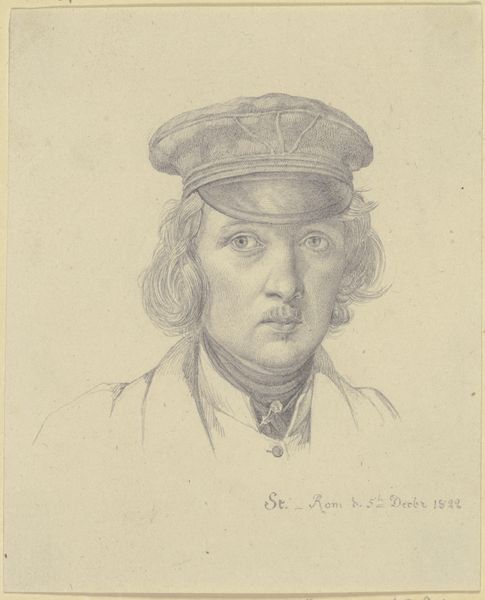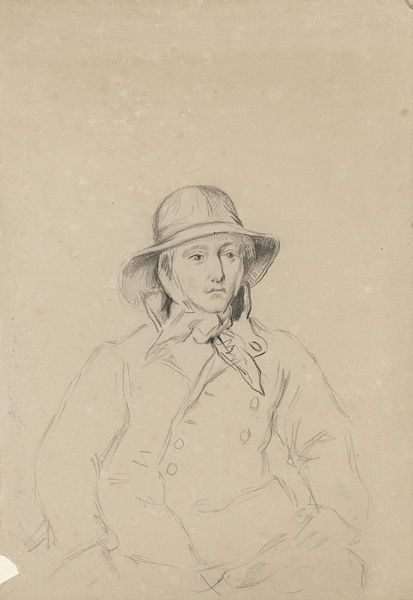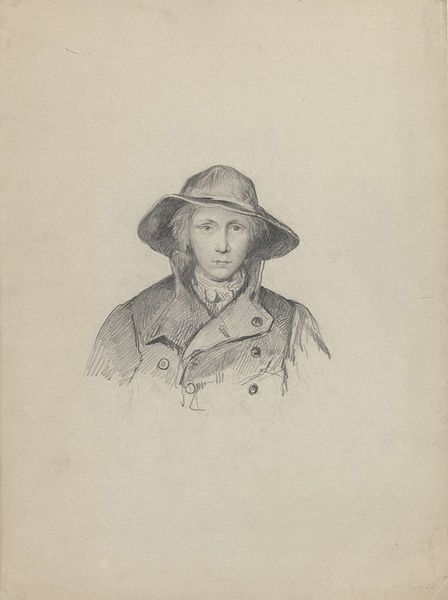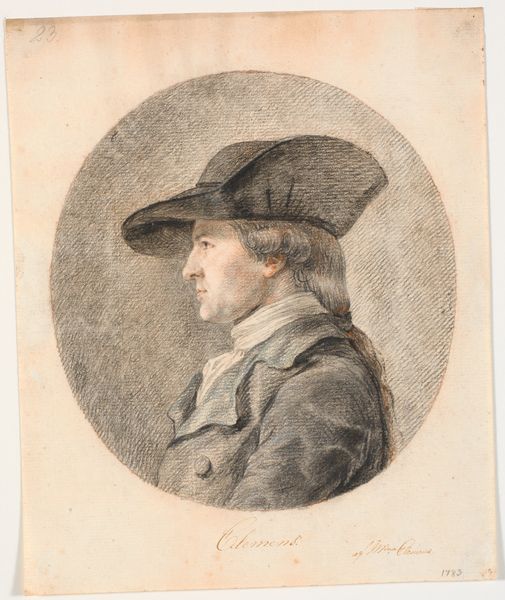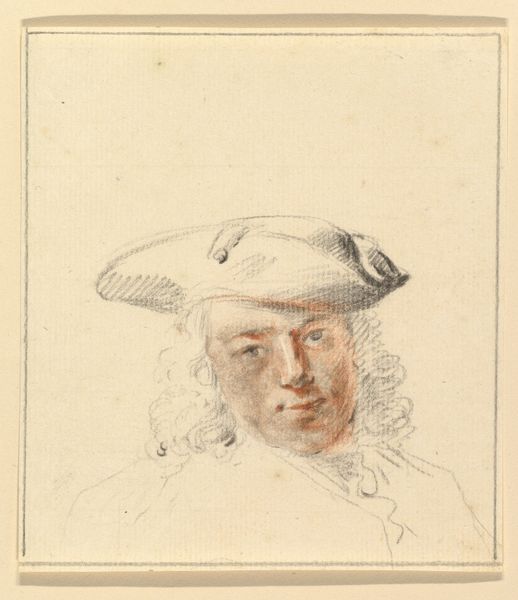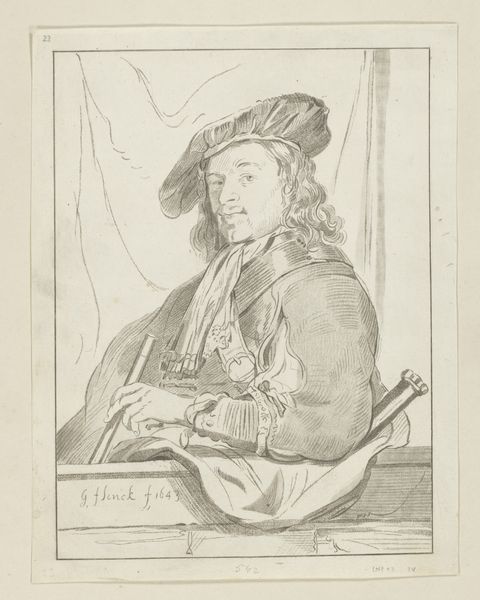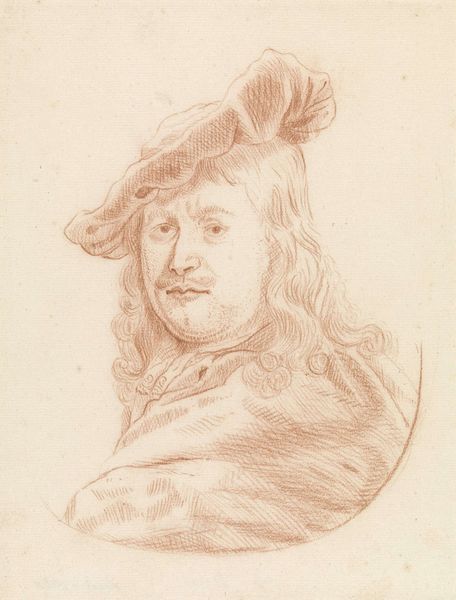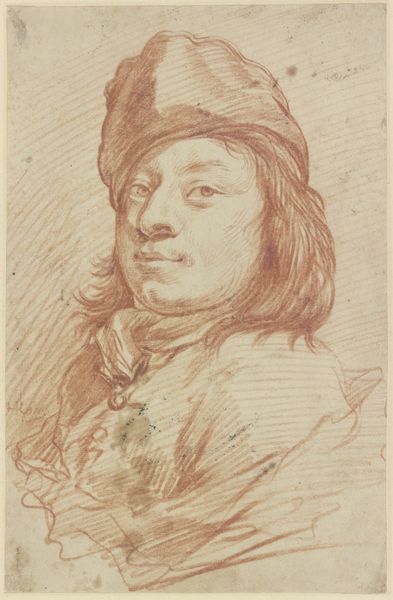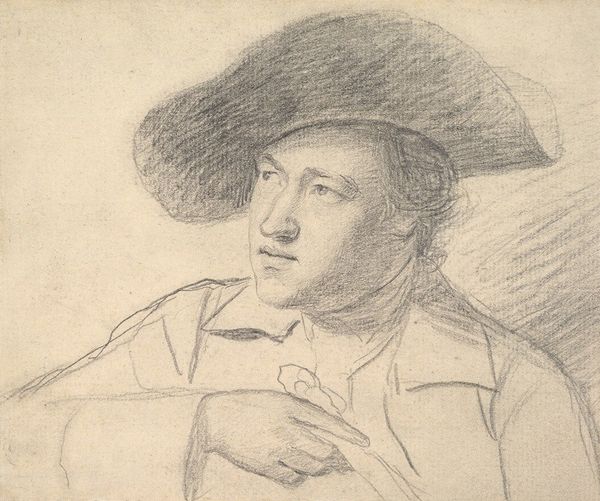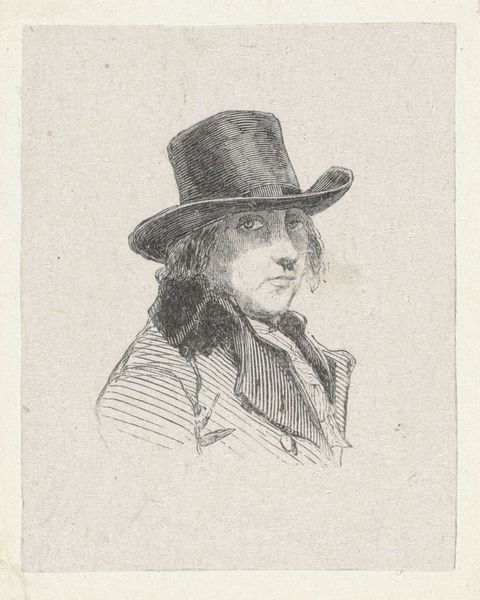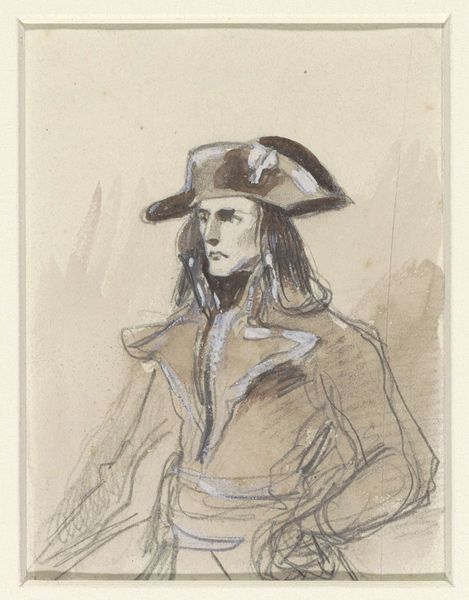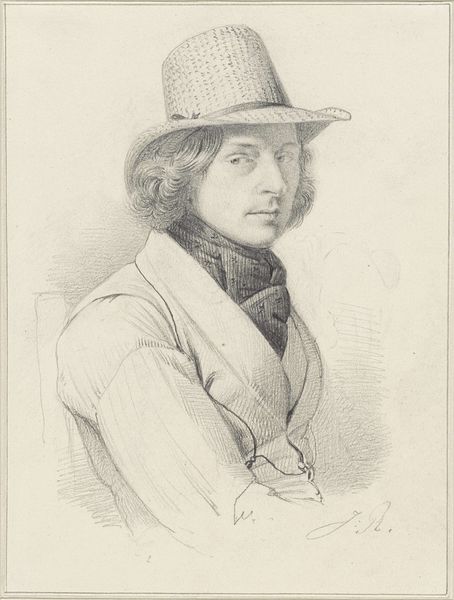
drawing, paper, charcoal, pastel
#
portrait
#
drawing
#
charcoal drawing
#
paper
#
charcoal
#
pastel
#
rococo
Dimensions: height 248 mm, width 190 mm
Copyright: Rijks Museum: Open Domain
Editor: So, this is Cornelis Troost’s "Portrait of Ludolf Bakhuysen the Younger," created sometime between 1737 and 1750 using charcoal and pastel on paper. It has such a light, almost ethereal quality. What do you see in this piece that maybe I'm missing? Curator: What strikes me is how this seemingly straightforward portrait subtly reflects the evolving social dynamics of its time. Think about the Rococo period, and its shift away from the overt power displays of the Baroque. Look at his expression—not stern or imposing, but rather introspective, almost inviting. Who was allowed this kind of representation, and why? Editor: That's interesting, I hadn't considered that! It makes me wonder about his choice of charcoal and pastel too – so much softer than oil paint. Curator: Exactly. Pastel, in particular, became incredibly popular amongst the aristocracy and upper-middle class. What does it suggest about accessibility and the changing relationship between artist and patron, when portraiture became less about immortalizing power, and more about capturing individual character? Do you notice anything else? Editor: The way his gaze is directed off to the side makes him look almost contemplative and relaxed. Curator: Right, it challenges traditional notions of masculinity and status that were prevalent for centuries in portraiture. It humanizes him in a way that previous eras rarely permitted. Who got to have their humanity reflected, and why? Editor: Wow, I never would have picked up on all that just looking at it! Curator: Art provides clues to power structures. The materials, style, and even the subject's gaze—all whisper stories about identity, privilege, and shifting societal values. Now, what else can you discover?
Comments
No comments
Be the first to comment and join the conversation on the ultimate creative platform.
